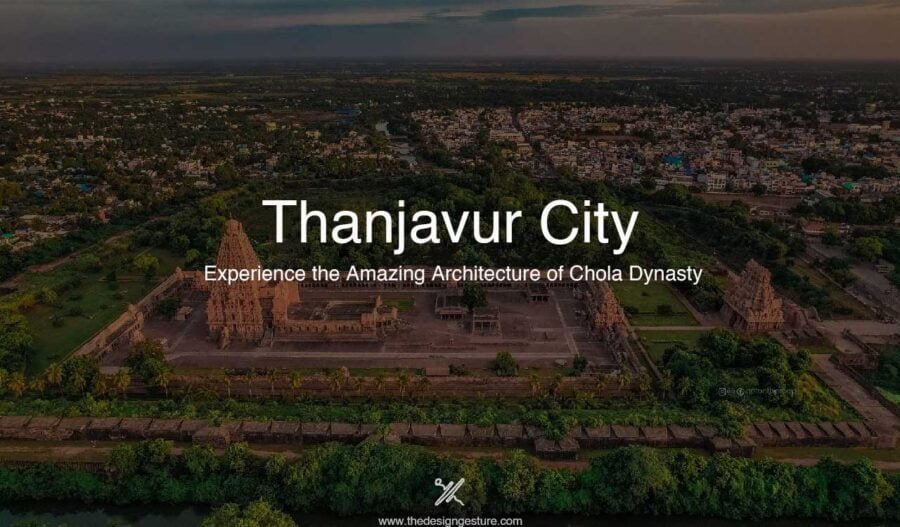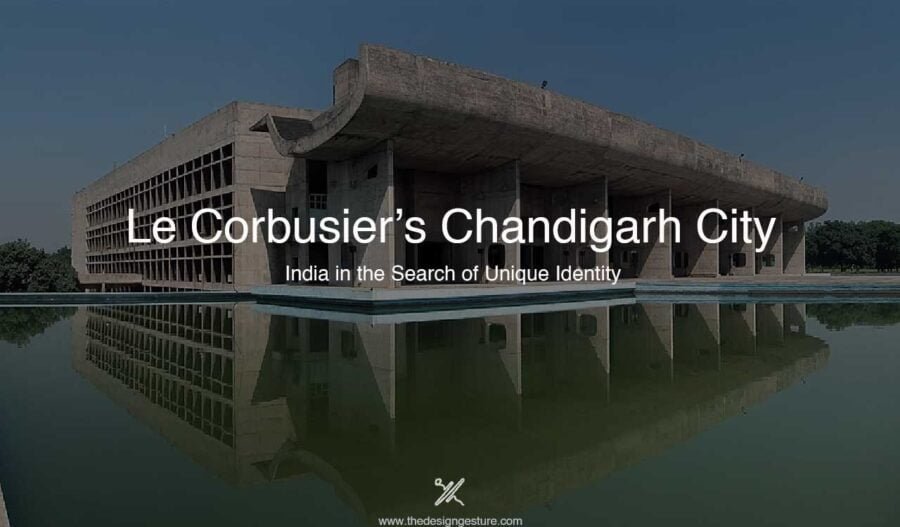Table of Contents
Thanjavur Tamil Nadu
Thanjavur City also known as Tanjore is reminiscent of the Chozha reign, Dravidian civilization, and Tamil heritage, every brick and stone in Thanjavur speaks of the legacy of its past. Thanjavur celebrated as a center of heritage and religious tourism, is a magnificent city with plenty of heritage sites to visit, authentic art and cultural festivals to experience, and a variety of shrines to endow the pilgrims with devotion. Thanjavur has thrived under various rulers of disparate dynasties and has been the capital of the Chozhas, the Mutharayars, and the Marathas that the monuments and the architecture of Thanjavur reflect.
However, another institution often associated with Thanjavur is SASTRA. Discussing the contemporary Thanjavur without mentioning the SASTRA University is an abridged account. In 1984, Shanmugha College of Engineering was established in Thanjavur spreading across over a sprawling 1.5 million square feet. The University has acquired national attention since its inception and was renamed later as Shanmugha Arts, Science, Technology and Research Academy abbreviated as SASTRA.
Thanjavur City is located on the eastern coast of Tamil Nadu in the Cauvery (River Kaveri) Delta. Its geographic location near the river Cauvery has played a major role in nourishing the land, facilitating agriculture on its fertile soil, and developing an agriculture-based economy since ancient times. Paddy, coconut, sugarcane, and rice all thrive in the Thanjavur soil. Besides being an abode of heritage, arts, and culture, Thanjavur is also known as the ‘Rice Bowl of Tamilnadu’. It is no secret that Thanjavur boasts a rich cultural heritage and traditional architecture that has also caught the attention of UNESCO.
UNESCO has listed Thanjavur’s Architectural marvel, the Brihadeeshwara temple in Thanjavur as one of the three temples under the ‘Great Living Chola Temples’ besides the Brihadeeshwara Temple at Gangaikonda Cholapuram and the Airavatesvara Temple at Darasuram. The traditional Thanjavur dolls rendered in exotic colors and the classic Thanjavur paintings that glisten in gold foils and studded gems demonstrate the richness of the traditional art and crafts of Thanjavur. The cultural music and dance festivals held in Thanjavur annually are a symphony of sound and sight exemplifying the cultural heritage of Thanjavur.
The History of the Thanjavur City
The History of the Thanjavur city is inseparable from the Chozhas and their reign during which the city flourished. The Thanjavur city became prominent during the 12th and 13th centuries under the Chozha patronage when art, literature, and architecture thrived. The Chozha rule was marked by important interventions beginning with the establishment of Sangam Literature, the expansion of Thanjavur territory, and the construction of temples and monuments not to mention the Brihadeeshwara Temple.
However, the Chola reign declined during the period of 1120CE to 1163CE and was overthrown by the Pandya Kings who the Vijayanagara Kings ousted. Under the Vijayanagara King, the Thanjavur Nayaks ruled over Thanjavur. Again in 1674, Thanjavur faced a change of power and this time it was the Marathas who conquered Thanjavur until Thanjavur was taken over by the British rulers by the Treaty of 1799.
The Cultural Festivals of Thanjavur City
Thanjavur, since the Chozha period has always supported and promoted literature, art, music, and dance. Even the Brihadeeswarar Temple located in the once capital city of the Chozhas, Thanjavur is said to have drawn musicians, scholars, craftsmen, and merchants and especially served as a platform for dancers who excelled in the traditional dance form of Sadir also known as Bharathanatyam. Modern-day cultural festivals like The Natyanjali Dance Festival, Madras Music Season, and Thiruvaiyaru Thyagaraja Aradhana pay homage to the arts that flourished in the region in the past and ensure the subsistence of these traditional arts.
These festivals merely reflect Thanjavur’s rich cultural heritage. Thanjavur city has not only celebrated art, music, and dance but has also paved the way for novel interventions in music and dance and hosted some of the finest artists of the period in Carnatic Music; Syama Sastri, Muthuswami Dikshithar, and Tyagharaja Bhagavathar and the founders of Bharatanatyam; Ponnayya, Chinnayya, Shivanandam, and Vadivelu known as the ‘Tanjore Quartet’. The 72 Melakarta system and the Thanjavur Veena or Raghunatha Nayaka Mela Veena also emerged from this land of arts, culture, and heritage.
The Natyanjali Dance Festival is celebrated in the Chidambaram town of Thanjavur and is dedicated to Lord Nataraja on the sacred day of Mahasivarathri. The festival provides a chance for classical dance experts to exhibit their excellence. Thiruvaiyaru Thyagaraja Aradhana is a 6-day event on the banks of the river Cauvery in Thanjavur. During this festival over 500 musicians from various regions take part annually to sing the Thiruveetuvar’s compositions dedicated to Lord Shiva.
Arts, Crafts, and Architecture of Thanjavur City
The city is a hub of artistic and cultural heritage, celebrated for its traditional arts and crafts such as unique Thanjavur painting and Thanjavur dolls, as well as ancient crafts like bronze icon-making, art plate production, and bell-metal casting. Additionally, the region is known for its ornamental fans, mats, and traditional musical instruments like the Veena discussed above. Thanjavur city is also a prominent center for handloom silk and cotton sarees, making it a treasure trove of South Indian craftsmanship.
Thanjavur Painting usually used to depict gods and goddesses, are one of the significant traditional art forms that are renowned for the inlay work with glass beads semi-precious stones, and gold foil. Thanjavur dolls are also locally known as Thalaiyatti Bommai; Thalaiyatti means “shaking head” and Bommai means “doll”. This is an exclusive art and craft entity of the city believed to have emerged due to Maratha King Serfoji’s passion for colors and art.
The doll comes as two or three separate pieces; the lower body, the upper body, and the head which are attached temporarily together such that it oscillates due to which the doll seems to dance. The dolls come in various colors, sizes, and characters that mimic Manipuri dancers, Kathakali dancers, Bharatanatyam dancers, and merchant couples. These Thanjavur dolls are sold extensively during the Navaratri Season but they also serve as perfect gifts and showpieces or decor items.
Thanjavur City owes its splendid architecture, towering vimanas, intricately carved stone gopurams, and its overall urban ambiance to the Chozha Dynasty. As a norm of the past, Kings, and Emperors relied on architecture to exhibit their authority and legacy, and the Chozha kings and their Dravidian architecture weren’t an exception.
Following the Pallavas who were at the peak in producing granite temples, notably the present-day UNESCO-recognized rock-cut cave temples at Mahabalipuram of the 6th century, and the massive granite temples at Kanchipuram, once the Chozhas gained power, they intended to surpass the limits of the Pallavas and to establish their supremacy with tangible entities and thus, the Dravidian temples made solely with granite mushroomed in the Chozha Empire and of course their capital city of Thanjavur. The renowned Brihadeeshwara temple is one such initiative and Thanjavur was an abode of Chozha architecture, some of which is discussed below.
The Legacy of Brihadeeswarar Temple, A Shaivite Hindu Temple
Brihadeeshwarar Temple, also known as Rajarajeshwarar Kovil, Peruvudaiyar Kovil, and Thanjai Periya Kovil takes pride in its sound structure and brilliant architecture that stood intact for over a thousand years. According to the inscriptions on Dakshina Meru, the Chozha King, Arulmozhivarman popularly known as Raja Raja Chozha I, the son of Sundara Chozha and Vanavan Mahadevi, conceived the temple, inaugurated its construction, and consecrated the Shaivite Temple in his 25th regal year in 1010 CE. It is believed that King Raja Raja Chozha built this temple upon dreaming of establishing a huge temple for Lord Shiva after visiting the Pallava Rajasimha Temples in Kanchipuram.
What sets this temple apart from other temples? Firstly, its massive scale, granite architecture, and carved sculptures are remarkable. The whole temple complex symmetric and axially layed out, is carved out of granite which is extracted approximately 60 kilometers to the west of the temple. The Garbagriha or the sanctum is located in the center of the farther half of the complex encircled by a colonnaded prakara or circumambulating corridor. The prakara is adorned with sub-shrines dedicated to the ashatadikpalas and consists of the Raja Rajan Tiruvasal, the main entrance to the shrine with a gopura.
The vimanam or the temple tower is 66 meters high making it the tallest in the world. The Kumbam or the bulbous structure on the top of the temple vimana is carved out of a single rock weighing around 80 tons. The big statue of Lord Nandi (a sacred bull) situated at the entrance of the temple is carved out of a single rock measuring about 4.9 meters long and 4.0 meters high. Secondly, the temple marked the emergence of a new style of Chola architecture like the multifaceted columns along with projecting signals of square capitals in the prakara.
As Thanjavur Tamil Nadu was subject to the reign of various dynasties of different linguistic preferences, it saw continuous extensions. The Maratta and Nayaks rulers constructed various shrines and gopurams of the temple and carried out various other interventions. For instance, the fort walls of the Sivaganga Little Fort surrounded by a moat, and the Sivaganga Tank outside the temple enclosure were constructed by the Nayak rulers. The temple was known as Rajarajeshwaram or Rajarajeshwara temple during the Chozha period but later during the Maratha reign as Sanskrit was more popular the temple was renamed in Sanskrit as Brihadisvaram. As of today, the temple is better known as Thanjai Periya Kovil.
Architectural Review of Thanjai Mamani Kovil, A Lord Vishnu Shrine
Among the Shaivite Temples built during the Chozha reign, a temple complex dedicated to Lord Vishnu was also built on the banks of the Vennaaru River in Thanjavur, the Thanjai Mamani Koil. It is considered to be a divyadesham, one among the significant 108 Vishnu temples worshipped by the Alvars, the 12 poet saints. The unique feature of this temple is that it is an abode of three Vishnu temples that lie within the temple complex not just one. An Indo-Dravidian style is dominant in the temple Architecture. Similar to other Chozha temples the Thanjai Mamani Kovil is constructed with granite stones.
The Schwartz Church, Illustrating the Inclusive History
The Schwartz church is one of the oldest known churches in India built during the colonial period situated only 500 meters away from Brihadeeshwara temple. The Schwartz Church exemplifies the tolerance that prevailed in Thanjavur despite being known as a temple town. The church embodies an amalgamation of indigenous and European architecture built by the great Maratha King, Raja Serfoji in display of his respect and gratitude for the Danish missionary Reverend Schwartz, who was also his mentor and tutor in the 18th century.
A stark French influence can be found in the arches, the gateway, and the foreground heights. Though it was built during the British reign, the Schwartz Church is still seen as a symbol of secularism, and the rulers’ courtesy displayed towards various religious beliefs.
Understanding the Thanjavur Maratha Palace
The Thanjavur Maratha Palace complex also locally known as Thanjavur Aranmanai features the Saraswati Mahal Library, the Mahratta Darbar Hall, the bell tower, and the Saarjah Madi. The Marathas did not build the Palace as the name suggests, instead, it was the Nayaks who built the complex that was later subjected to additions and renovations following the conquest by the Marathas. The construction of the Thanjavur Aranmanai began in 1534 and was completed in 1535 with intensive labor of the local prisoners.
The Saraswathi Mahal Library hosts more than 49,000 manuscripts, both on paper and on palm leaves in various languages like Sanskrit, Tamil, Telugu, Marathi, and Manipravalam. The library is divided into two sections, a library and a museum which houses rare collections of old medical manuals, the Ramayana, the Mahabharata, and other Sanskrit writings. In addition to books and manuscripts, a statue of the Goddess Saraswathi, a large picture of Rama Pattabhishekam, a few stunning paintings of Lord Ganesha and Goddess Lakshmi, miniatures of several Tanjore Maratha Kings, and two enormous portraits of Sarfoji II is found in the hall. The library is open to the general public and concerned authorities are engaged in the preservation of the priceless manuscripts.
FAQ
- How to reach Thanjavur tamil nadu?
Thanjavur is well connected by road, rail and the nearest airport is in Tiruchirappalli, which is about 55 km away. Buses and taxis are readily available for local transportation within the city.
- Are tourists entertained within the Brihadeeshwarar Temple?
Yes, tourists can visit the Brihadeeswarar Temple and the temple is open from 6:00 AM to 12:30 PM and then from 4:00 PM to 8:30 PM. However, visitors are advised to check the current timings before their visit as they can change on special occasions or festivals. There is no entrance fee to enter the Brihadeeswarar Temple. However, if tourists wish to take photos or videos, they may have to pay a small camera fee.
- How are Thanjavur paintings made?
There are many steps involved in the creation of a Thanjavur Painting, the primary involves drawing the preliminary sketch of the image on the bottom. the bottom is created of an artifact, that is glued over a wood base. The second step consists of blending chalk powder or zinc oxide with soluble adhesive and applying it to the bottom. Thereafter, the drawing is created and ornate with glassware, pearls, and even semi-precious stones. Laces or threads may additionally be wont to beautify the painting. To augment the result, wafer skinny sheets of gold are glued in relief on some elements of the painting, whereas the opposite elements are painted in bright colors.




